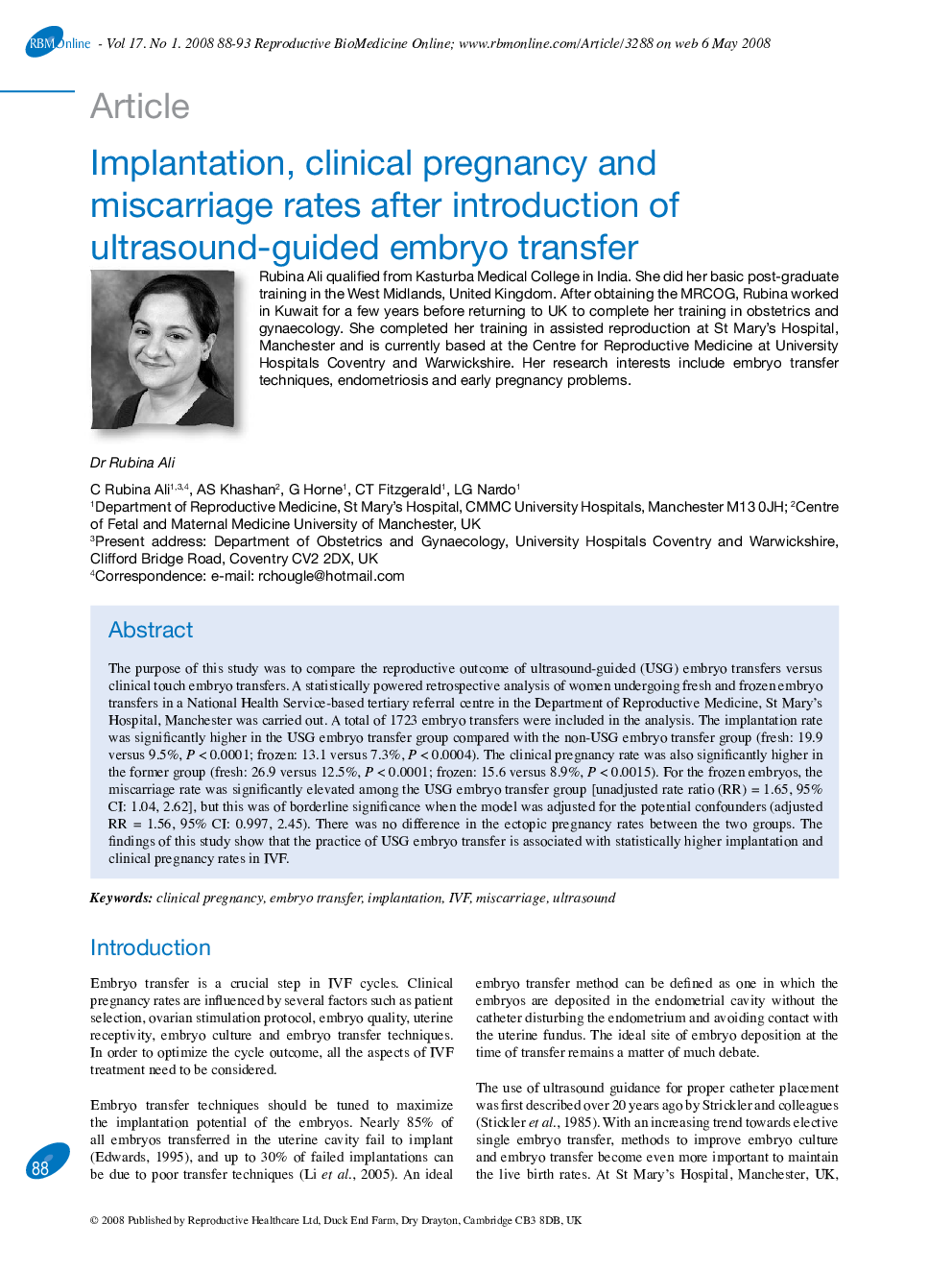| Article ID | Journal | Published Year | Pages | File Type |
|---|---|---|---|---|
| 3972409 | Reproductive BioMedicine Online | 2008 | 6 Pages |
The purpose of this study was to compare the reproductive outcome of ultrasound-guided (USG) embryo transfers versus clinical touch embryo transfers. A statistically powered retrospective analysis of women undergoing fresh and frozen embryo transfers in a National Health Service-based tertiary referral centre in the Department of Reproductive Medicine, St Mary's Hospital, Manchester was carried out. A total of 1723 embryo transfers were included in the analysis. The implantation rate was significantly higher in the USG embryo transfer group compared with the non-USG embryo transfer group (fresh: 19.9 versus 9.5%, P < 0.0001; frozen: 13.1 versus 7.3%, P < 0.0004). The clinical pregnancy rate was also significantly higher in the former group (fresh: 26.9 versus 12.5%, P < 0.0001; frozen: 15.6 versus 8.9%, P < 0.0015). For the frozen embryos, the miscarriage rate was significantly elevated among the USG embryo transfer group [unadjusted rate ratio (RR) = 1.65, 95% CI: 1.04, 2.62], but this was of borderline significance when the model was adjusted for the potential confounders (adjusted RR = 1.56, 95% CI: 0.997, 2.45). There was no difference in the ectopic pregnancy rates between the two groups. The findings of this study show that the practice of USG embryo transfer is associated with statistically higher implantation and clinical pregnancy rates in IVF.
